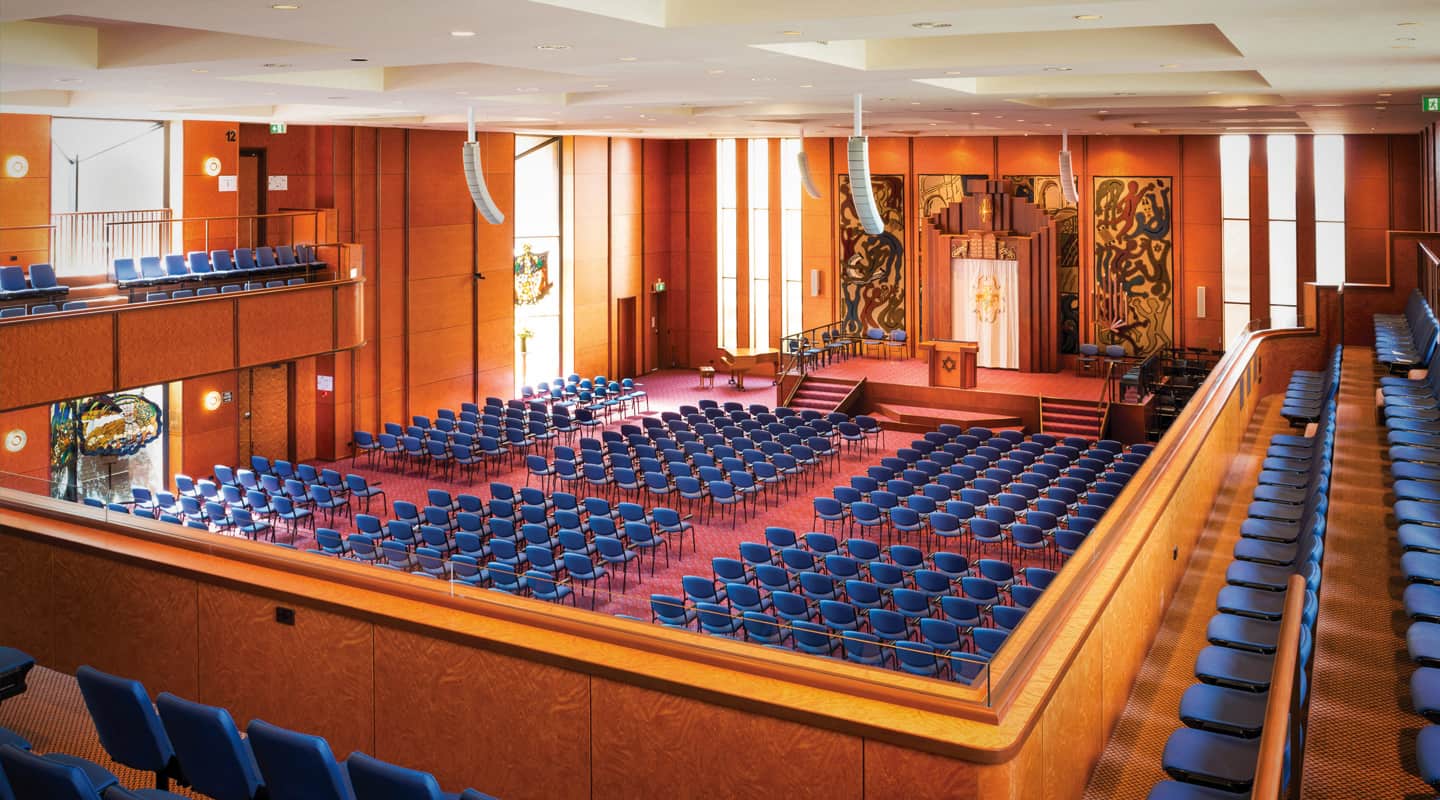
Hanging on Every Word
For this house of worship, every word is sacred, and now every seat is the best seat in the house.
Text:/ Christopher Holder
A rabbi reading AV? Well, it’s not as far-fetched as it may first seem.
In the realm of house of worship, the evangelical Christian market may be leading the technological charge but at least one synagogue is turning to professional AV to enhance the experience of its congregants.
Melbourne’s Temple Beth Israel (TBI) is a progressive synagogue led by a youthful rabbi. Rabbi Gersh Lazarow likes his tech and likes what it has done for his ‘business’:
“Whilst there are no shortage of adaptable analogue systems, the ability to go into our digital system from an iPad makes us adaptable while running,” enthuses Rabbi Gersh. “That’s been extraordinary, and changes almost everything we do. I recently stood next to our lectern and saw a grandmother in the second row leaning in to hear her 12 year old grandchild publicly reading from the torah for the first time — straining to hear. Without anyone noticing I discreetly reached for the iPad, and just went tap… tap… tap and in each of those taps [of the fine gain] I could see the elderly lady gradually leaning back until she was sitting relaxed with a gleaming smile on her face. The 12 year old’s delivery didn’t change — he remained just as quiet and terrified — I just gave him a little more support. It’s these things that have nothing to do with the reason why we’re established — our community and our purpose and mission — nonetheless it’s made such a difference.”
TBI has a painstakingly planned and integrated AV system that represents a perfect fit for its purpose: a PA that provides high speech intelligibility to every seat in the house, and a video capture system, under the auspices of bespoke control interface that aims to do virtually all of the heavy AV lifting with single button presses.
KNOWN KNOWNS
Modern houses of worship are curious and challenging. At their best, they’re a combination of a theatre, a rock venue, a media distribution centre, a nightclub, and a conference centre… all marshalled by enthusiastic yet mostly unqualified amateurs.
TBI’s requirements weren’t necessarily as multifarious or ambitious as a ‘happy clappy’ church, but they were exacting. The core of the brief was simply to design an audio system that would replace the obsolete 25-year-old rig and provide better speech intelligibility. AV consultants, Hanson Associates, were engaged to provide the acoustic engineering and to put together a tender document for the job. Melbourne-based integrator, Urban Intelligence, won the tender.
Led my Mark Hanson, Hanson Associates methodically mapped TBI in order to design the best sound reinforcement system. Week to week most of the synagogue’s activities take place in the main sanctuary, while an adjoining functions hall is opened via operable walls to make space for the throngs attending the big-ticket New Year high holy days in September.
What you see pictured is TBI in full high holy day grandeur. Two pairs of Martin Audio Omniline (powered by Crown CTS amplifiers) cover the space. Martin’s micro array is designed for maximum control, resulting in the least amount of unwanted acoustic reflections. With the space mapped and then modelled in Martin Audio’s Display program, the optimum positioning of the arrays could be determined, leaving only a handful of shaded ‘dead zones’ which have been addressed via surfacemount QSC loudspeakers that Urban Intelligence recessed into the cabinetry of the hall.
The sound is excellent. What’s most remarkable is the speech intelligibility. This is sound reinforcement at its least intrusive — natural, comfortable, and with crystalline clarity.
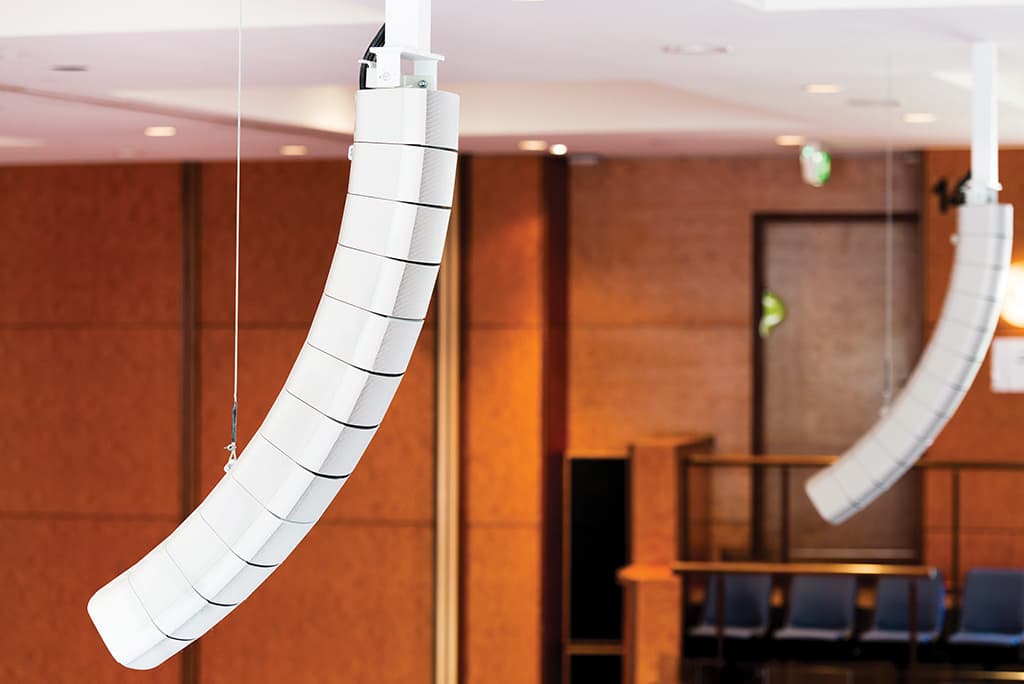
SATURDAY NIGHT’S ALRIGHT
The slender Martin Audio tendrils that hang so elegantly from the TBI ceiling may be the most obvious aspect of the installation but arguably it’s the digital Dante backbone and the control aspects that steal the show.
Jewish religious ceremonies have been around while. And although the TBI community is progressive, they’re not ‘throw the rule book out’ progressive. By which I mean the vast bulk of the sanctuary’s use is foreseeable. The services maintain a structure where the rabbi, the cantor and other players are reliably in certain positions, reliably going about their weekly business.
The trick for Urban Intelligence was to observe the routines and build those observances into presets in the control system. What’s more, using wi-fi, the control system could be hosted by an iPad (a Ubiquiti UniFi pro wireless access point provides “bulletproof” wi-fi).
As it turned out, the control — with its source selection, and fine gain settings — is so elegant and ‘fall off a log’ easy to use, additional control hardware was unnecessary. Yes, there are touchpanel wall controllers if the wi-fi or iPads go down, but you won’t find an audio mixing console anywhere in the synagogue; you won’t find a vision mixer or ‘media booth’.
Come Saturday, Rabbi Gersh will select his Shure wireless mic (that’s been gain set for his use), and he’ll press Go on the vision streaming and recording, and duly commence proceedings.
Once sparked up, the four Basler fixed cameras (there are an additional three cameras in the function space) send video to the Dell server. Each camera records to its own 1.3TB drive for eight hours of uncompressed recording. The drives are in a RAID array for redundancy’s sake. Once the rabbi hits Go, the main camera (wide, front shot) streams live via a 50Mb/s up/down microwave link from the synagogue’s website. When the service is complete, and the Stop button is pressed, the four video recordings are backed up to a Synology 10TB NAS drive as an MP4 file which can be accessed by the Temple Beth’s front office. The four feeds can be saved onto a 16GB USB stick and presented to the family of the 12 year old boy, for example, whereupon they can have it post produced and packaged if desired from the various camera angles.
The Basler digital cameras, although not PTZ, are more often found in labs and other commercial applications, appreciated for their extra level of calibration and tweakability. Urban Intelligence’s CEO Lior Rauchberger isn’t yet satisfied with the quality of the video, but that’s down to the lack of control of the ambient light rather than any deficiency in the cameras’ optics.
Meanwhile, the captured audio from these recordings is exceptional. In no small part thanks to the lack of spill and controlled dispersion of the Martin Omniline — the ‘stage’ is whisper quiet. With any high-gain mics there’s always the spectre of background hiss, but Urban Intelligence installed a virtual Dante card in the Dell server with what Rauchberger as “unbelievable” results: “The capture and sync is of an unbelievably good quality.”
KEEP THIS FREQUENCY CLEAR
Mark Hanson, Principal of Hanson Associates on the whys and hows of speech intelligibility:
“Our brief was to design a sound system that delivered high speech intelligibility and music clarity but was also flexible enough to allow the synagogue to mic up individuals, their acoustic instruments and a choir around the sanctuary. All this had to be achieved in a sensitive manner where the technology would not be visually distracting.
“The actively processed Omniline arrays fitted the bill. Martin Audio’s Display program allows you to carefully define your listening planes in the space and where you really don’t want to send sound — for example, toward a rear reflective wall. With the assistance of Technical Director Ambrose Thompson at Martin Audio, we were able to optimise the design by tailoring the audio signal sent to each individual speaker. This allowed for the precise pattern control required to match the geometry of the room. The consistency in frequency response across all positions in the Omniline coverage zone using this system is incredible, and direct sound pressure levels vary by only a few dB from front to back — a stunning result for congregation members who now receive great sound wherever they sit. This degree of uniformity in response and level is important when dealing with microphones wandering amongst the congregation. Synagogue staff can place a microphone or instrument where they want it, confident the system will be stable and not feedback.
“Each Omniline speaker within each array is individually amplified (using eight-channel Crown CTS amps) and individually processed. The processing is determined by the highly sophisticated optimisation algorithm. There are a few optimisation techniques on the market but most assume each element in an array has the same or equivalent dispersion characteristics as a box in isolation. But that’s not true — as soon as you start locating loudspeakers amongst others in an array, the characteristics change, and depending on where the box is in the array it has different dispersion characteristics. That’s all included within the model. The output of the optimisation process is an FIR filter for each speaker, which is loaded into the London Blu signal processing system.
“High speech intelligibility is achieved as a result of generating a temporal response with strong direct sound, and a reflection pattern that is free from distractions: strong early reflections that change the colouration of the sound and late reflections that may be perceived as an echo. Flat frequency response that accurately produces the tonal qualities of a voice is also essential which is why reliance on objective measures alone (such as STI and C50) will not guarantee a satisfactory outcome for a speech reinforcement system. With temporal and frequency responses looked after, attention to system gain or signal-to-noise ratio (requiring a high feedback stability margin) is the third important component address when designing for high speech intelligibility and effortless listening conditions; where a listener is given the impression someone is talking to them from only a fewof metres away.
“Overall, the Temple now has a sound system that allows people to concentrate on the message delivered rather than using cognitive effort simply to interpret the words spoken.”
KNOWN UNKNOWNS
Not every aspect of the synagogue’s proceedings are entirely predictable. Occasionally a multi-faith choir will perform, for example, or a band will be invited to play. Traditionally, this would be aesthetically messy (speakers on sticks and cables everywhere) and acoustically unpredictable. Urban Intelligence has dotted some 15 patch points around the building. Custom engraved and colour coded for ease of use, the plates also mean a mixing console could be effortlessly dropped into the Dante network.
Also, by special request of Rabbi Gersh, a BlueTooth connection allows the rabbi to stream music etc straight from his phone. “We have some very expensive items of gear in this new system, but I find this $30 purchase from Dick Smith very satisfying,” noted Rabbi Gersh. “That said, we have to keep it off except for when I need it, or else teenagers in the congregation will discover it during a service and I’d hate to think how that could play!”
Rounding out the audio features is an Ampetronic inductive hearing loop which has proven to be a real revelation for the elderly and hearing impaired. “We’ve had some feedback from congregants who report that it’s the first time they’ve properly heard a service in 40 years!” noted Rauchberger.
PERSONAL AUDIO
Integrating a hi-tech solution into a traditionally low-tech environment requires a champion. Doubtlessly the TBI champion is Rabbi Gersh. He’s not only happy to indulge the use of technology, he’s genuinely enthusiastic about its possible future applications. But right now he’s still blown away by how the new system has changed the life of his synagogue in the here and now:
“One of the challenges we face is fighting against the culture of prayer as performance art. It’s not a performance. We want everyone in the sanctuary to be an equal participant. This new system allows that. You can be in any seat in the room and feel like you’re sitting a metre or so away from me. In fact, it feels like the sound is specifically yours. That really changes the experience.”
CONTACTS
Hanson Associates: (03) 9815 3032 or www.hansonassociates.com.au
Urban Intelligence: (03) 9514 6000 or www.urbanintel.com.au
Technical Audio Group (Martin Audio, QSC): (02) 9519 0900 or tag.com.au
Jands (Crown, Shure, BSS): (02) 9582 0909 or [email protected]
Hills (Ampetronic): www.hills.com.au
Basler: www.baslerweb.com
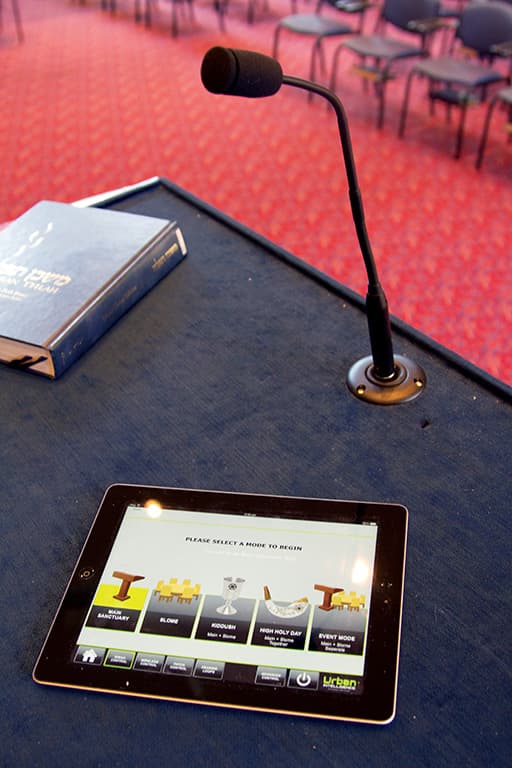

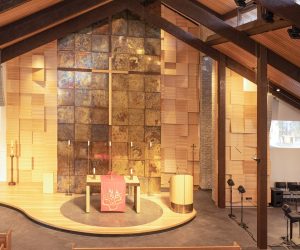
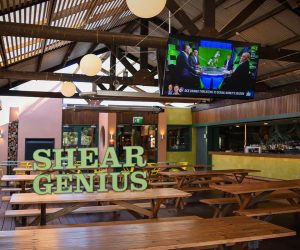

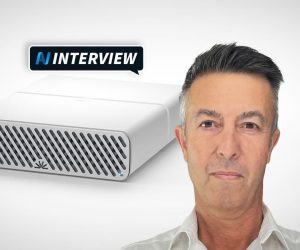





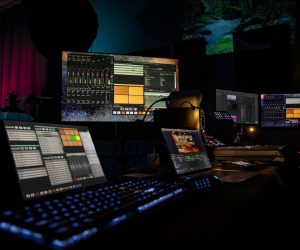
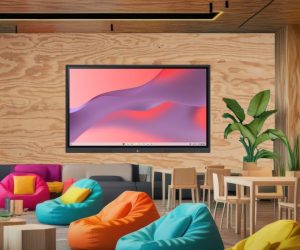



RESPONSES